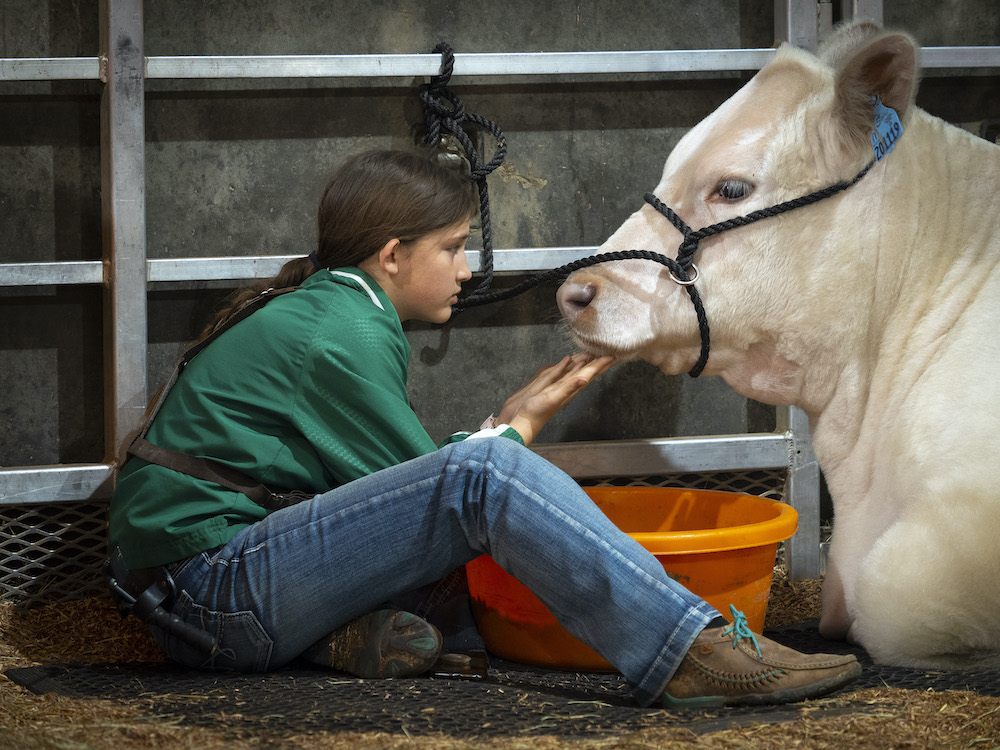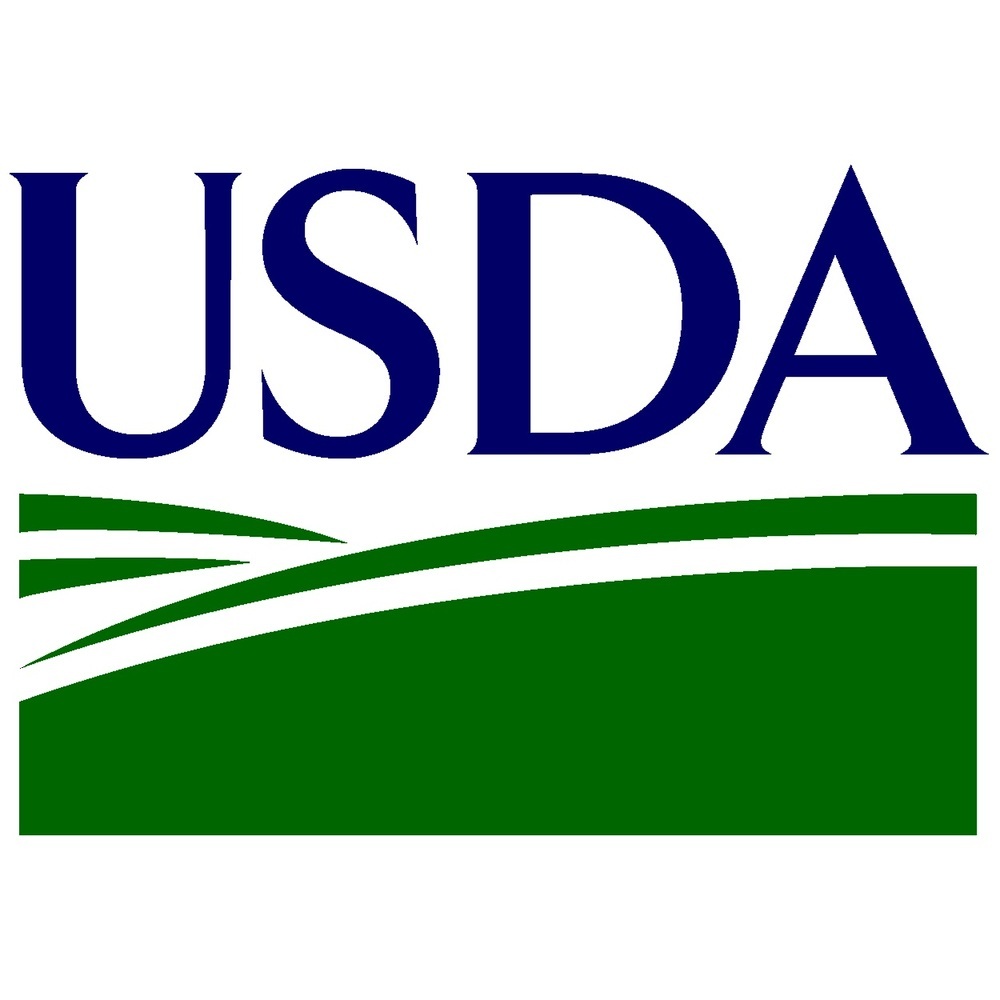Every farmer marks the passage of the year by the work that must be done. U.S. Wheat Associates (USW) has described the care needed as the crop grows to protect its potential yield and quality in a sustainable way. Stunning fields of gold m…
Category: Ag News
Aug 19
Adopt A Cow! A year-long FREE Experience in your Classroom
The Adopt a Cow program is a year-long FREE experience!
Forget the guinea pig. How about adopting a 100-pound dairy calf for your classroom mascot? Don’t worry about finding a pen big enough to hold her. The photos and stories we’ll send you about her life on the farm will make her “come alive” for your students! The best part? It is FREE!
After being paired with a calf from a dairy farm in the United States, you and your students will receive progress reports and photos, live chats from the farm, activity sheets for students, suggested lessons that follow Common CORE standards, and even opportunities to write letters to the farmer with questions and comments about the calf! ??
The free program is ideal if:
** You teach in a traditional classroom setting.
** You are homeschooling your kids/family members/friends.
** You run an after-school program.
** You facilitate a library program.
** You have an agriculture program at your museum or kids’ center.
** You are one of the above and are teaching/leading from in or outside of the United States. (Yes, anyone can join the program, even from New Zealand!)
Aug 19
Share agriculture during Read an Accurate Ag Book Week Sept. 6-9
All Farm Bureau members are encouraged to share the world of agriculture during Read an Accurate Ag Book Week September 6-9.
A program of Oklahoma Ag in the Classroom, agriculture leaders across the state will have the opportunity to joi…
Aug 19
There’s Still Time to Apply for ASA’s Conservation Legacy Awards!
Share the story of how conservation is part of your farm operation and you could be recognized with a Conservation Legacy Award. The awards recognize farm management practices of U.S. soybean farmers that are both environmentally friendly a…
Aug 19
38th Annual OCA Ranch Rodeo Kicks off Tonight at the Lazy E Arena
The 38th Annual OCA Ranch Rodeo kicks off tonight at the Lazy E Arena in Guthrie. Tickets are still available.
Farm Director, KC Sheperd, spoke with the chair of the Oklahoma Cattlemen’s Association Ranch Rodeo, Weston Givens, to…
Aug 19
Upcoming Webinar to Educate Cattle Producers about the Newest Pest Threatening the Industry
Click here to listen to audio
Senior Farm and Ranch Broadcaster, Ron Hays, visited with Chief Veterinary Officer of the National Cattlemen’s Beef Association, Dr, Kathy Simmons about an upcoming webinar to provide cattle pr…
Aug 19
Livestock Biosecurity a Diligent and Serious Task

From county jackpots to statewide shows, Oklahoma’s youth livestock arena is competitive and fun, but animal health is a priority.
Not all 4-H and FFA exhibitors can bring home a grand champion ribbon, but they’re still winners when sound biosecurity measures protect livestock from viruses and infectious disease. The public’s awareness of illness and proper hygiene has grown during the past two years, and animal health is no different. Every time an animal encounters another animal, there is potential for transmission.
“It’s very common for cattle to come home from a show and be under the weather,” said Dana Zook, Oklahoma State University Extension livestock specialist for the west district. “It could just be a virus, but there’s always a chance it could be more.”
Rusty Gosz, OSU Extension youth livestock specialist, said event planners have taken serious logistical measures in addition to onsite health management. Those extra protocols include:
• Flipping the timing of breeding and market shows to ensure breeding animals are not exposed to market animals.
• Making market shows terminal.
• Adjusting livestock traffic flow to reduce potential exposures.
• Increasing sanitation practices and using disinfectant sprays on the show grounds, livestock equipment, traffic areas, panels, wash racks and pens.
• Increasing health inspections and the presence of veterinarians.
• Establishing quarantine and exit strategies in the case of a sick animal.
Before the show
Elimination and prevention of animal disease begins with a tidy environment in barns or pens where animals reside at home. Routine cleaning of floors, water and feed troughs, buckets and other equipment provides benefits beyond the spread of harmful agents.
“The value of a biosecurity plan requires a team commitment,” said Rosslyn Biggs, beef cattle Extension specialist at the OSU College for Veterinary Medicine.
“Exhibitors should perform daily health assessments of their animals, keep close records of vaccines and ensure vaccines were administered in an appropriate manner. New animals at home should remain separated from the rest of the herd in isolation for two to three weeks, and animals should be monitored to prevent the exposure of wildlife and other species.”
At the show
Biosecurity precautions also involve a thorough health inspection of animals with accompanying documentation, properly filled out by exhibitors and signed by a licensed veterinarian. Keep that paperwork in an easily accessible spot in a vehicle and have it ready for review upon arrival. This streamlines the check-in process and reduces the amount of time animals must stand in trailers, waiting for clearance to enter the show grounds.
Basic biosecurity measures include clean bedding in an animal’s pen and tie-out area, keeping a well-stocked show box of animal health and safety items recommended by a veterinarian in case of an emergency, and being mindful of the potential for disease at the community wash racks.
“There’s the risk of respiratory disease at the wash racks where multiple animals can stand and touch the same things,” Biggs said. “It’s important to police wash racks and common areas to keep them free of manure, and don’t allow animals to drink from community water tubs.”
Avoiding stacking buckets also can eliminate the spread of a virus or disease. When dirt from the bottom of a bucket touches the inside of another where feed is stored, biosecurity is at risk.
“Animals are affected by dirt and things just like we are,” Zook said. “Preventing a biosecurity hazard involves common sense practices and good personal hygiene.”
After the show
After a long week or weekend away, animals returning home from a show should be quarantined from the rest of the herd for two to three weeks. Avoid nose-to-nose contact with other animals and feed and water the isolated animals in separate buckets and troughs.
“Change up the feeding order to care for the rest of the herd first before isolated animals to prevent spreading something through the entire herd,” Zook said. “Also, if a person has been around isolated animals and must go around other animals, they should take a shower beforehand, wash hands, or put on clean clothes, boots or shoes.”
The key to cleaning
Zook and Biggs also stressed that the most important thing to remember when cleaning equipment at a show or after returning home is to use soap and water first to remove any organic debris, including hay, manure or bed shavings.
“Applying disinfectant directly on organic matter will only inactivate the disinfectant almost instantaneously,” Biggs said. “Once equipment has been thoroughly cleaned, then apply disinfectant at the appropriate contact time.”
With the help of parents, advisors, veterinarians and peers, youth livestock exhibitors can practice a few basic steps to prevent illness in not only their prize animals but also those of their fellow exhibitors across the state. Maintaining a tidy appearance and caring for animals in a clean and responsible way is part of the livestock exhibition experience. Gosz said that while animals are judged in the show ring, exhibitors need to take ownership of their appearance and behavior, which are viewed on a much broader scale. Don’t cut corners with proper biosecurity and health measures; be vigilant and take the task seriously.
“Our livestock shows produce less than 2% of what we’re putting into the food chain, but probably 85% to 90% of the general public views agriculture through livestock shows,” he said. “We carry a huge responsibility of what people see, how clean we are, how we take care of our animals and how we feed our families.”
OSU’s Rancher’s Thursday Lunchtime Series covers this topic in a collection of videos on show cattle fundamentals. Watch Biggs and Gosz discuss biosecurity at youth livestock shows.
OSU Extension uses research-based information to help all Oklahomans solve local issues and concerns, promote leadership and manage resources wisely throughout the state’s 77 counties. Most information is available at little to no cost.
Aug 19
Friday Preopening Market Update with Dave Lanning

RON’s Dave Lanning has a pre-opening look at today’s agricultural Markets.
Click the audio tab below for today’s report.
Aug 19
Feeder Steers and Heifers Steady to Higher, Steer and Heifer Calves Higher at Woodward Livestock Auction
Woodward Livestock Auction Feeder Cattle – Woodward, OK
Thu Aug 18, 2022
AUCTION
This Week 2,988
Last Reported &…
Aug 18
USDA to Mail Additional Pre-Filled Applications to Producers Impacted by 2020, 2021 Disasters

The U.S. Department of Agriculture (USDA)?today announced another installment (phase) in assistance to commodity and specialty crop producers impacted by natural disaster events in 2020 and 2021. More than 18,000 producers will soon receive new or updated pre-filled disaster applications to offset eligible crop losses. Approximately $6.4 billion has already been distributed to 165,000 producers through USDA’s Farm Service Agency’s (FSA) Emergency Relief Program (ERP).
“We knew when we announced ERP in May that we would have additional applications to send toward the end of the summer as we received new information, and we came to know of producers who were inadvertently left out of the first data set we used,” said USDA Under Secretary for Farm Production and Conservation Robert Bonnie. “I am proud of our team’s continued effort to capture additional insurance records to enable over 18,000 producers to receive new or updated pre-filled disaster applications to provide much needed financial relief.”
FSA will begin mailing pre-filled applications in late August to producers who have potentially eligible losses and:
– Received crop insurance indemnities for qualifying 2020 and 2021 disaster events after May 2, 2022.
– Received crop insurance indemnities associated with Nursery, Supplemental Coverage Option (SCO), Stacked Income Protection Plan (STAX), Enhanced Coverage Option (ECO) and Margin Protection (MP) policies.
– New primary policyholders not included in the initial insured producer Phase 1 mailing from May 25, 2022, because their claim records had not been filled.
– Certain 2020 prevent plant losses related to qualifying 2020 disaster events that had only been recorded in crop insurance records as related to 2019 adverse weather events and, as such, were not previously provided in applications sent earlier this year.
– New Substantial Beneficial Interest (SBI) records, including SBIs where tax identification numbers were corrected.
Producers are expected to receive assistance direct deposited into their bank account within three business days after they sign and return the pre-filled application to the FSA county office and the county office enters the application into the system.?
Before applying any program payment factors or eligibility criteria, it is estimated that this next installment (phase) may generate about $756 million in assistance.
Emergency Relief Payments to Date
This emergency relief under ERP complements ERP assistance recently provided to more than 165,000 producers who had received crop insurance indemnities and Noninsured Crop Disaster Assistance Program (NAP) payments for qualifying losses. USDA has processed more than 255,000 applications for ERP, and to date, has made approximately $6.4 billion in payments to commodity and specialty crop producers to help offset eligible losses from qualifying 2020 and 2021 natural disasters. Also, earlier this year, staff processed more than 100,000 payments through the Emergency Livestock Relief Program (ELRP) and paid eligible producers more than $601.3 million for 2021 grazing losses within days of the program announcement.
Phase Two
The second phase of both ERP and ELRP will be aimed at filling gaps and provide assistance to producers who did not participate in or receive payments through the existing risk management programs that are being leveraged for phase one implementation. USDA will keep producers and stakeholders informed as program details are made available.????
More Information
In addition, on Aug. 18, 2022, USDA published a technical correction to the Notice of Funds Availability for ERP and ELRP to clarify how income from the sale of farm equipment and the provision of production inputs and services to farmers, ranchers, foresters, and farm operations are to be considered in the calculation of average adjusted gross farm income. Producers whose average adjusted gross farm income is at least 75% of the producer’s the average Adjusted Gross Income can gain access to a higher payment limitation.
ERP and the previously announced ELRP are authorized by the?Extending Government Funding and Delivering Emergency Assistance Act, which President Biden signed into law in 2021. The law provided $10 billion to help agricultural producers impacted by wildfires, droughts, hurricanes, winter storms and other eligible disasters experienced during calendar years 2020 and 2021.
For more information on ERP and ELRP eligibility, program provisions for historically underserved producers as well as Frequently Asked Questions, producers can visit FSA’s Emergency Relief webpage.?A new public-facing dashboard?on the ERP webpage has information on ERP payments that can be sorted by crop type – specialty or non-specialty– specific commodities and state. FSA will update the dashboard every Monday.
Additional USDA disaster assistance information can be found on?farmers.gov, including the?Disaster Assistance Discovery Tool,?Disaster-at-a-Glance fact sheet and?Farm Loan Discovery Tool. For FSA and Natural Resources Conservation Service programs, producers should contact their local?USDA Service Center. For assistance with a crop insurance claim, producers and landowners should contact their?crop insurance agent.?????
USDA touches the lives of all Americans each day in so many positive ways. Under the Biden-Harris administration, USDA is transforming America’s food system with a greater focus on more resilient local and regional food production, fairer markets for all producers, ensuring access to safe, healthy and nutritious food in all communities, building new markets and streams of income for farmers and producers using climate smart food and forestry practices, making historic investments in infrastructure and clean energy capabilities in rural America, and committing to equity across the Department by removing systemic barriers and building a workforce more representative of America. To learn more, visit usda.gov.
USDA is an equal opportunity provider, employer and lender.

















